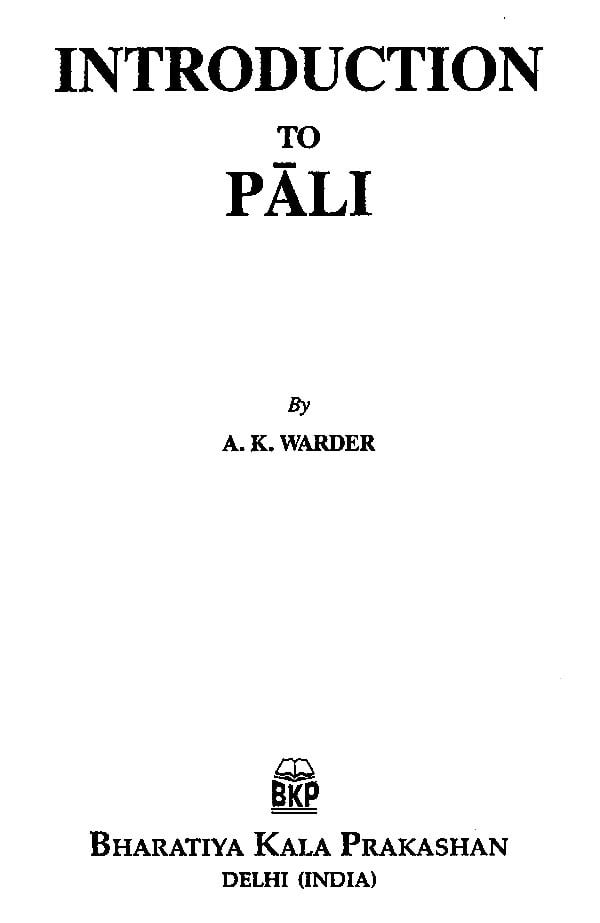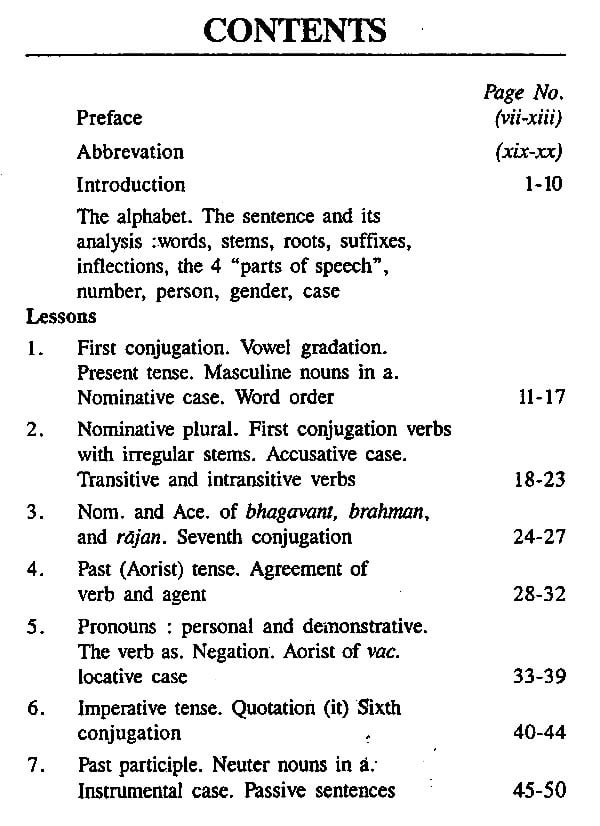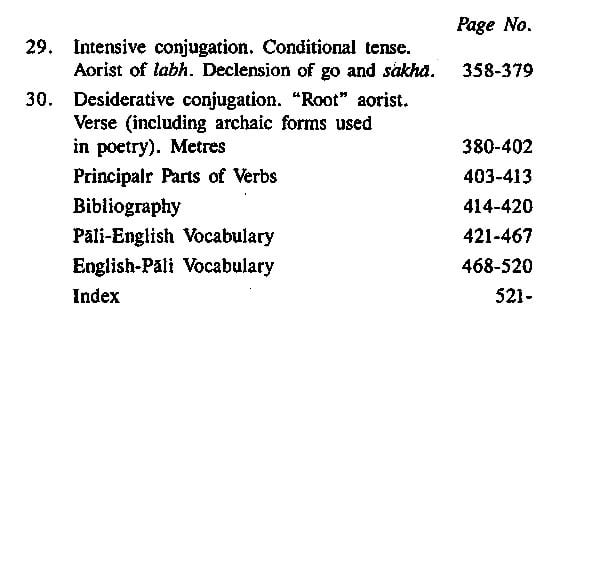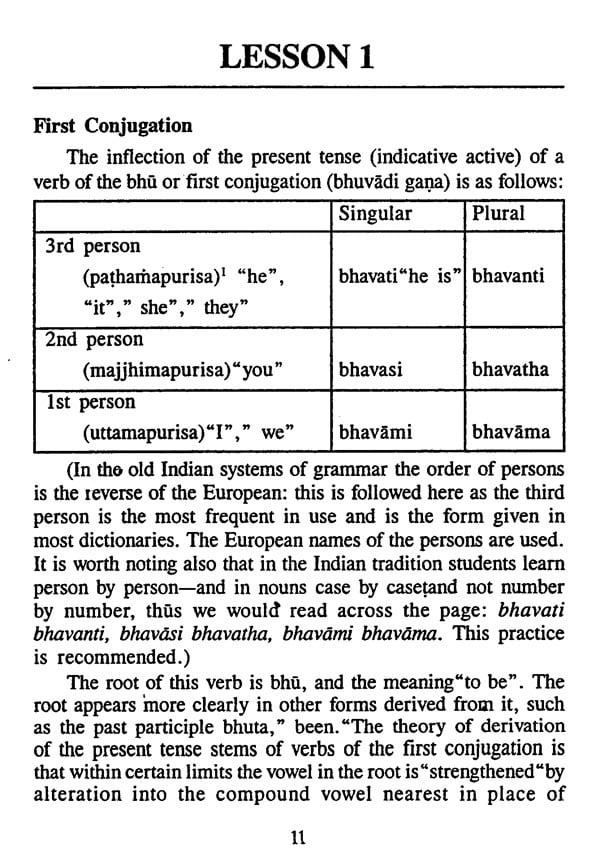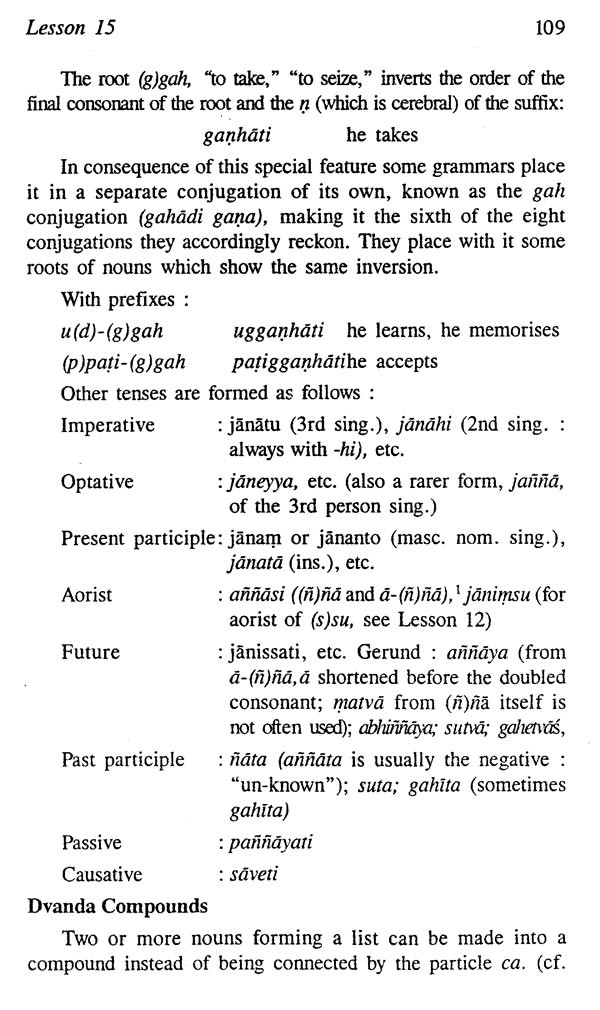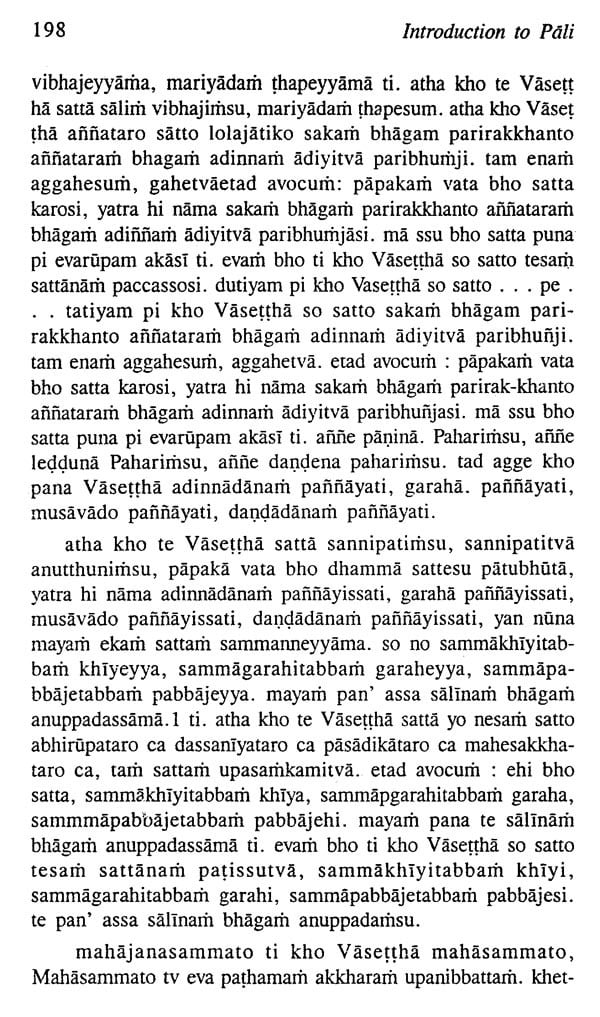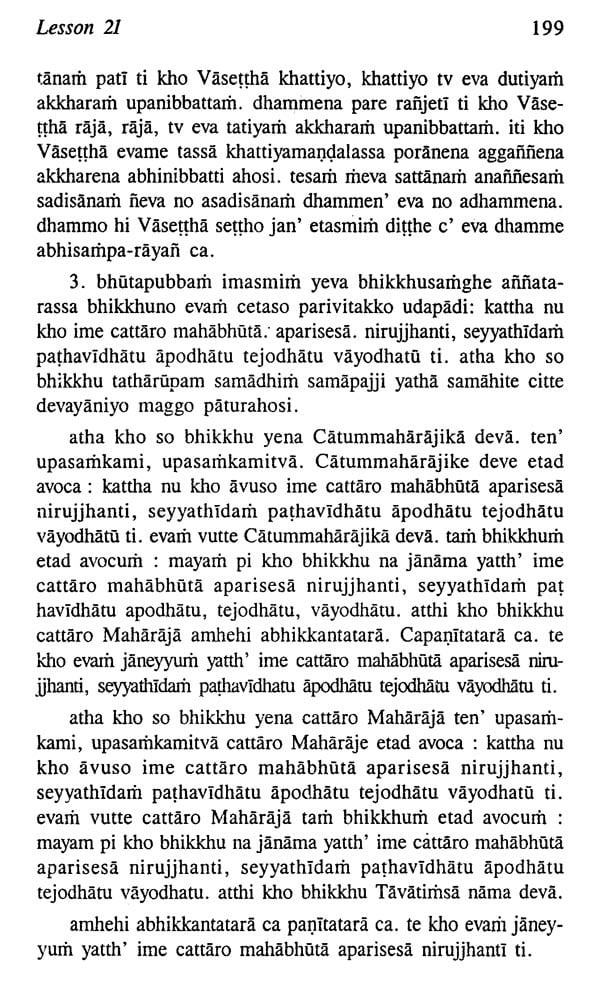
Introduction to Pali
Book Specification
| Item Code: | AZE672 |
| Author: | A.K. Warder |
| Publisher: | Bharatiya Kala Prakashan |
| Language: | ENGLISH |
| Edition: | 2014 |
| ISBN: | 9788180901201 |
| Pages: | 542 |
| Cover: | HARDCOVER |
| Other Details | 9.00x6.00 |
| Weight | 840 gm |
Book Description
Our grammatical analysis is based the admirable science of the on medieval monks. Their terminology is given, to aid reference, but may of course be ignored by the beginner. The intention here is to cover Pali grammar and syntax in a comprehensive manner.
This grammar differs from earlier grammars in being a description of the Canonical language as a relatively homogeneous and consistent form of speech, ignoring later usages (which would confuse the description and sometimes confound the interpretation). It is also "descriptive" in being an analysis of Canonical usage as far as possible without historical "squinting" at other languages.
The sentences and passages for reading are taken, with only the un avoidable minimum of editing in the first exercises, from prose texts in the Digha Nikaya of the Canon. Prose sentences provide the student with straightforward examples of the language, uncons trained by metrical considerations.
The texts from which extracts are given expound the philosophy of Buddhism fairly systematically, but in narrative and dialogue style against a historical background of the Buddha's wanderings and meetings with a variety of characters.
The arrangement of the book is based on the experience that extensive reading is the easiest way to learn a language. The vocabulary and grammar are made familiar and meanings are made explicit by sufficient numbers of encounters The study of early Buddhism will always be the objective of the majority of those who take up Pali, though in addition to the interest of the language itself we must stress the importance of the texts for the study of the history of Indian literature, especially secular literature (literature as literature, "fine" literature, Pāli kāveyyam Sanskrit kavya-the latter embracing the prose novel and the drama as well as poetry).
Pronunciation: roughly as in English except:
the aspirate consonants are accompanied by a strong breath-pulse from the chest, as when uttering English consonants very emphatically the non-aspirate consonants are accompanied by a much weaker breath-pulse than any English consonants, c is like chi in "choose" (so is chi, but with strong breath pulse), except that the middle of the tongue (jivhamajjha) only, not the tip, touches the palate (position as in English g).
the cerebrals are pronounced with the tip of the tongue rather further behind the teeth than in the English t and d, giving a somewhat hollow sound.
**Contents and Sample Pages**
